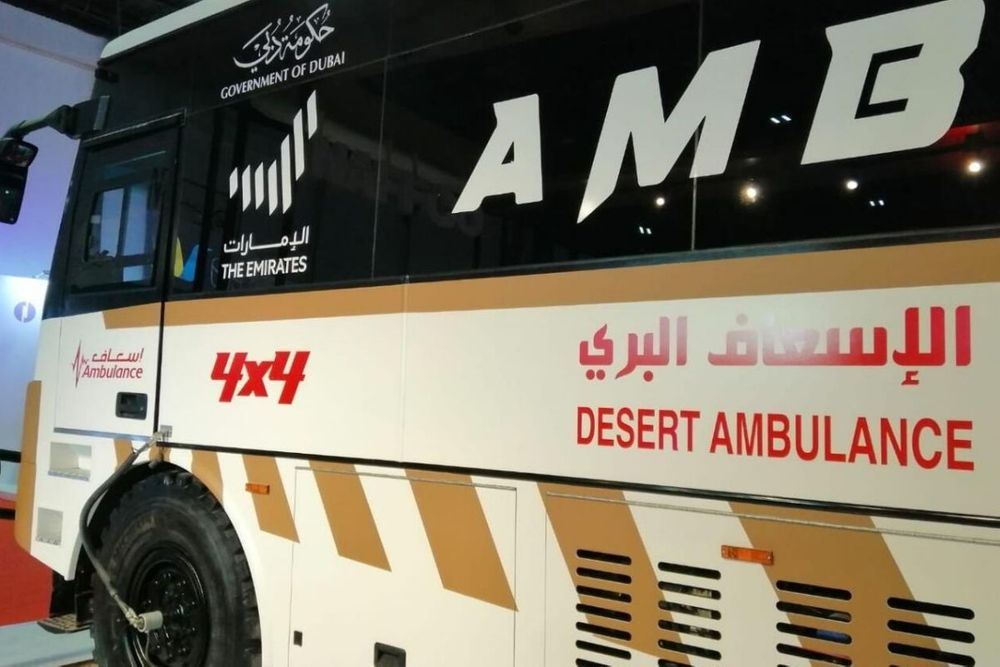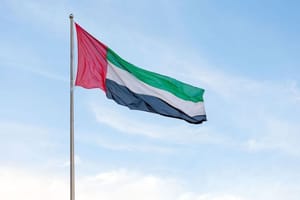A new 4X4 Desert ambulance – a one of its kind service — was launched at the Arab Health 2022.
Eng Mohamad Mawed, sales director local (vehicles division) NAFFCO, said ambulances are a lifeline during emergencies, but getting an ambulance to the accident spot is doubly challenging when they occur in the desert.
“Here in the Gulf, many accidents happen in the desert due to extreme sports or lapse of judgment, or unfamiliarity of the area. The UAE has a culture of outdoor sports in the deserts and mountains. People enjoy it, but mishaps also happen if one is not properly trained. We’ve seen in the past that it is difficult to access such sites. With this ambulance accessing such challenging terrains will become easier and faster. The driver ambulance is also specially trained as it’s a 4X4 and it takes a different set of skills to safely manoeuvre the dunes,”
“It can go to the desert or mountains where normal ambulances find it difficult to access which can sometimes lead to critical time being wasted.”
The vehicle can carry seven patients at a time and is also equipped with WiFi and live camera to relay the patient’s condition in advance to a hospital.
Mawed said,
“This vehicle displayed here is the first and the latest desert ambulance and it’s built in the UAE by NAFFCO and will be distributed all around the world. One of the most important aspects of medical transport is safety and quick response time to mitigate casualty numbers, and bearing this in mind, this vehicle has been developed in the country and will join Dubai’s ambulance fleet once the fair is over,”
“It is equipped with the latest medical equipment and designed with the latest technology and software and, built with environment-friendly material that is anti-rust, anti-bacterial and anti-fungal and which can be disinfected or cleaned easily.”
The ambulance has all equipment needed to stabilise someone who is ill or injured and can get them to a hospital. “It has solar power to recharge medical equipments as well,”
These include stretchers, defibrillators, spine boards, oxygen and oxygen masks, cervical (neck) collars, splints, bandages and a range of drugs and intravenous fluids.
Mawed added,
“The aim is to provide patients with professional, caring, yet cost-effective ground Critical Care Transport before reaching the hospital. This must meet high standards that are equal or exceed all regulatory agency guidelines,
News Source: Khaleej Times









